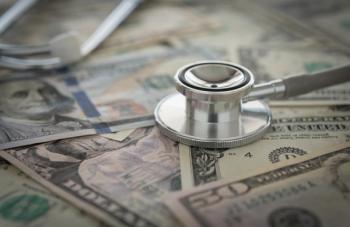
How physicians can address burnout
Overcoming the complicated burden with a personal path to recovery.
There is no question that mental health difficulties have become pervasive with providers in North American medical practices, with over 50% of physicians reporting
And that was before COVID-19. The number of US adults suffering from depression and anxiety has grown from 20 to 53 percent post-COVID, and is likely even higher for medical professionals, especially those on the front lines of fighting the pandemic.
It has been
When you’re supposed to be the caretaker, it’s hard to admit you need help
Healthcare professionals and especially physicians often hold themselves to such high standards that it is difficult to admit when they need help. The word “burnout” is practically a codeword of this mindset and philosophy. What does burnout really mean or represent for physicians? I have had the privilege of speaking with many physician friends and colleagues who openly talked about feelings of burnout. One doctor might say, “I’ve seen all my patients and now I need to spend two hours writing my notes and completing my electronic health record work.” A sympathetic colleague might respond, “Tell me about it! And I’m supposed to take my daughter to dance class in 45 minutes!” Later, both physicians hurry out of the office thinking, “Why am I working so hard? Should I reduce my practice time? Did I rush anything toward the end of the day?”
The expectation to perform both clinical and administrative functions flawlessly can result in immense pressure. Most physicians also know that
Physicians want discretion
The first step to both understanding and addressing burnout is acknowledgement and designation of resources. Both domestic advocacy groups, like the
Allocation of strategic funding to address burnout is more mixed. Having spoken to physicians from various organizations around the Bay Area, it is not uncommon to hear complaints like, “We need more funding for confidential well-being programs and not just continuing medical education (CME) classes. We need help and not just facts.” Hectic jobs require flexible solutions. Many physicians also prefer personal and more discreet therapies. I have personally taken advantage of retreat weekends and mindfulness instruction through the curricula offered by our Wellbeing Committee which has an annually designated budget. This commitment to flexibility and funding then prompts the next question: what should be offered to physicians facing burnout stressors?
A practical answer to where an organization should begin their efforts is to, “Start by doing what is necessary, then what is possible, and suddenly you are doing the impossible.” Many corporations, foundations, and medical groups have found it possible to offer services centered around
Two drawbacks to in-person approaches, however, include increased per capita costs and personal preference for remote care—the latter becoming even more evident during the COVID-19 pandemic. There are many novel self-directed solutions available that represent an alternative to traditional therapies, such as meditation-focused Calm App and therapist-supported distance instruction. Preliminary data shows that the
Next steps for physicians and employers
Here are some steps individual physicians can take to address their own depression and anxiety issues:
- Take time to pause and reflect on your current state of mental health and stressors.
- Consider using a burn-out scale or phq9 / gad7 scale to qualify symptoms if you think anxiety, depression, or burnout might be present.
- See what resources are available for help through your work, health insurance, health care professional, and community.
- Commit to taking time daily (even 5-10 minutes) to working on stress reduction, mindfulness, or other related activities.
- Invite someone to provide accountability and feedback. This can be a family member, friend, or mental health professional.
Medical groups and employers can also take steps to help physicians experiencing burnout:
- Form a peer-represented Wellness Committee to help organize resources and communicate with members.
- Commit to providing an annual budget for the Wellness Committee.
- Ensure confidential mental health / counseling benefits are part of benefits packages for clinicians.
- Consider partnering with community organizations to provide confidential in-person, counseling, digital mindfulness training / therapy, and educational opportunities.
- Create a culture of acknowledgement that promotes a “no blame, no shame” environment when it comes to burnout, anxiety, and depression.
We must continue to both accept the use of terms like burnout and recognize that they are the gateway into the mindset of dedicated, hard-working professionals like physicians who may not want to accept the
About the Author
Dr. Vahamaki is a Family Medicine Physician; Medical Director, Palo Alto Medical Foundation; and a Scientific Advisor to Meru Health. He graduated from the Western University Health Science College of Osteopathic Medicine of The Pacific in 2003.
Newsletter
Optimize your practice with the Physicians Practice newsletter, offering management pearls, leadership tips, and business strategies tailored for practice administrators and physicians of any specialty.











